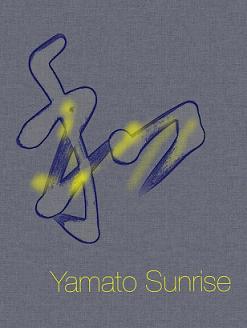Work in Japan Advice Board


- Jobs in Japan @ Daijob.com
- Japanology
Creative Career Path
Japanology2012.02.14

Japanology (Nihonjinron) is a genre of writing about Japan, books which attempt to explain the Japanese to themselves and to the outside world. Each of these works is as revealing of the times in which they were written as they are of Japan itself. Although the attempt is like the blind men describing an elephant based on the part which they are touching, the leg, the tail, the trunk, or the ear, scholars and Japanophiles return over and over again to attempt the task. http://en.wikipedia.org/wiki/Nihonjinron
These books produce mixed reactions in those who read them. Some of the insights seem brilliant in capturing the essence of the culture, others have aged as outmoded stereotypes, while others still seem to describe a culture unrecognizable today.
The Compact Culture: The Japanese Tradition of Smaller is Better, written in 1992 by a Korean Scholar O-Young Lee, unveils the Japanese genius for making things smaller and better, from the folding fan, to the transistor, and in almost every aspect of life in Japan. The recurring theme is that of a skill and sense for reducing things to their minimal essence and function and beauty. And yet one would never use this to describe a Japanese meeting or PowerPoint presentation, nor does it describe the bustle and noise of a modern Japanese city.
Japan as Number One: Lessons for America, written in 1978 by Harvard Professor Ezra F. Vogel, was a bestseller, describing a society that seemed to have made utopia a reality, the envy of the world, solving problems in education, crime, government, and science, a template for economic and social success in the modern world. And yet it wasn’t long before the bubble burst, and those successes seemed to have been a dream come crashing down.
The Chrysanthemum and the Sword, written by Anthropologist Ruth Benedict in 1946, was a profoundly insightful study of the Japanese, with research conducted remotely during wartime, yet playing a major role in the U.S. government’s attempts to understand its enemy and befriend its future ally. The book provided insights into the role of the Emperor in Japanese society, as well as the role of shame in dictating behavior and values. And yet today one would wonder how a society could change so drastically over just 60 years from what it was in living memory.
Zen in the Art of Archery, written by Eugen Herrigel in 1948, was a seminal work in introducing Zen to the West, a bestselling book which inspired the generation of the 1960s and a host of Zen in the Art of... titles, most of which were weak in comparison, partly because they were not original, but also because Eugen Herrigel actually studied Archery and Zen in Japan from 1924~1929. And yet he was in Japan a mere five years. Few people realize that Eugen Herrigel also joined the Nazi party in 1937, and quickly rose in the academic ranks under Hitler’s regime.
Hagakure (The Book of the Samurai), was written in the early 1700s by Yamamoto Tsunetomo, as a practical and spiritual guide for the warrior, which could be summed up as living as though one was already dead, and that Bushido meant that the warrior should be ready to die at any moment in loyalty to his lord. Written a hundred years into the Edo Period, the author was forbidden by the Tokugawa Shogunate to commit retainer’s ritual suicide following the death of his own lord. It turns out that rather than representing Bushido, this book was more about how a retainer of the clan located in the part of Japan now known as Saga Prefecture should die for his lord.
Bushido: The Soul of Japan, was written by Nitobe Inazou in 1900. First written in English, this book had an interesting impact overseas, was influential in the formation of the Boy Scouts (from the Boy Scout Oath to the Merit Badge System), and had an influence on two U.S. Presidents, Theodore Roosevelt and John F. Kennedy. And yet Nitobe Inazou was not a Samurai but a scholar, an economist, a diplomat, a politician, and a Christian.
The character for Japan is 和 (Yamato, Wa). Whatever slice of Japanology you pick, you are bound to get a taste of the author’s particular recipe. While this is a gourmet experience in itself, it should not be mistaken for the full cuisine, which is vast enough to provide a lifetime of discovery, a perennial Yamato Sunrise.
William Reed WEBSITE: http://www.williamreed.jp WEB TV: http://williamreed.tv NANBA: http://www.nanbanote.com iPAD CREATORS CLUB: http://ipadcreatorsclub.com BLOG: http://www.EntrepreneursCreativeEdge.com
Article Writer
William Reed is a renowned author-speaker who coaches physical finesse and flexible focus for a creative career path. A certified Master Trainer in Guerrilla Marketing and 7th-dan in Aikido, he combines practical wisdom of East and West to help you learn personal branding at the Entrepreneurs Creative Edge.
Similar Articles
- 2015.08.04A Comparison between Western and Asian D...
- 2015.07.28Being an Effective Communicator
- 2015.07.21Making Your Presentation Interactive




